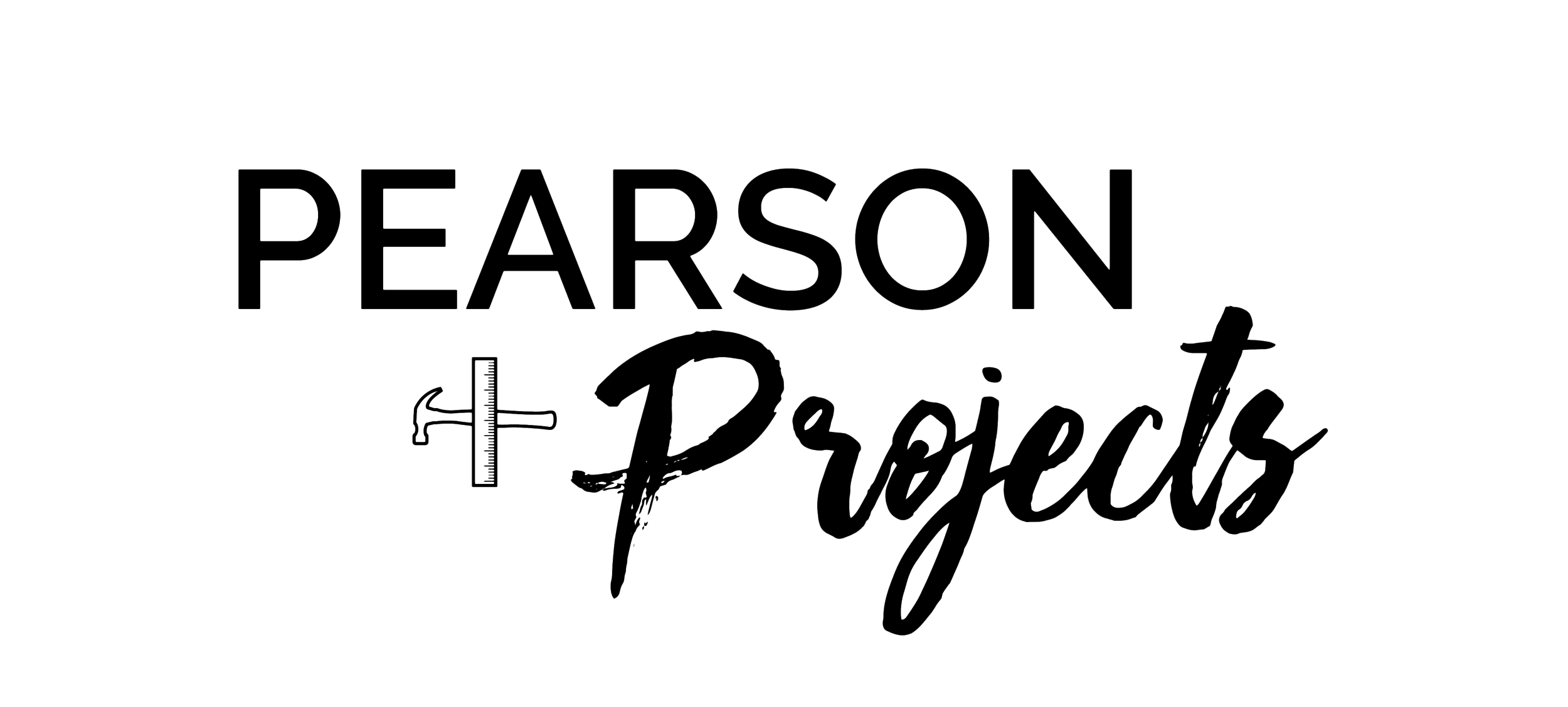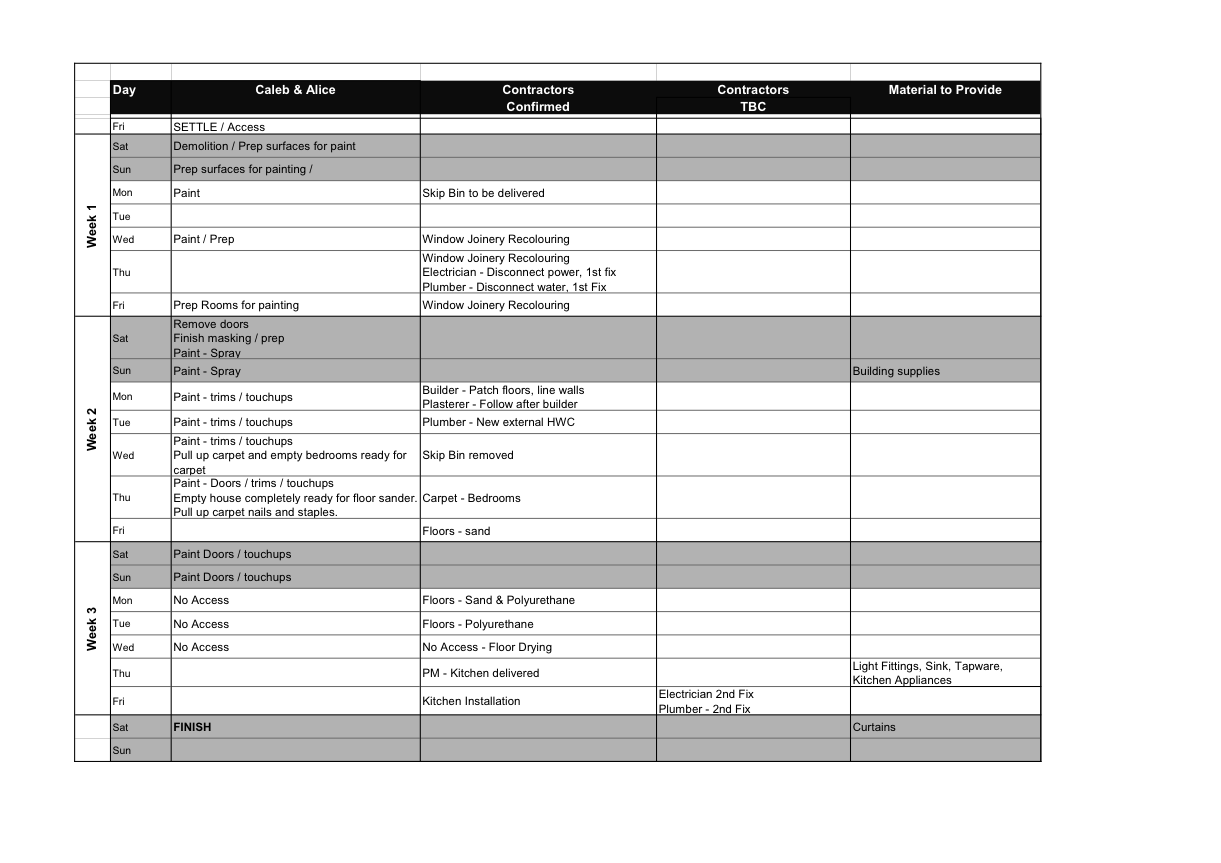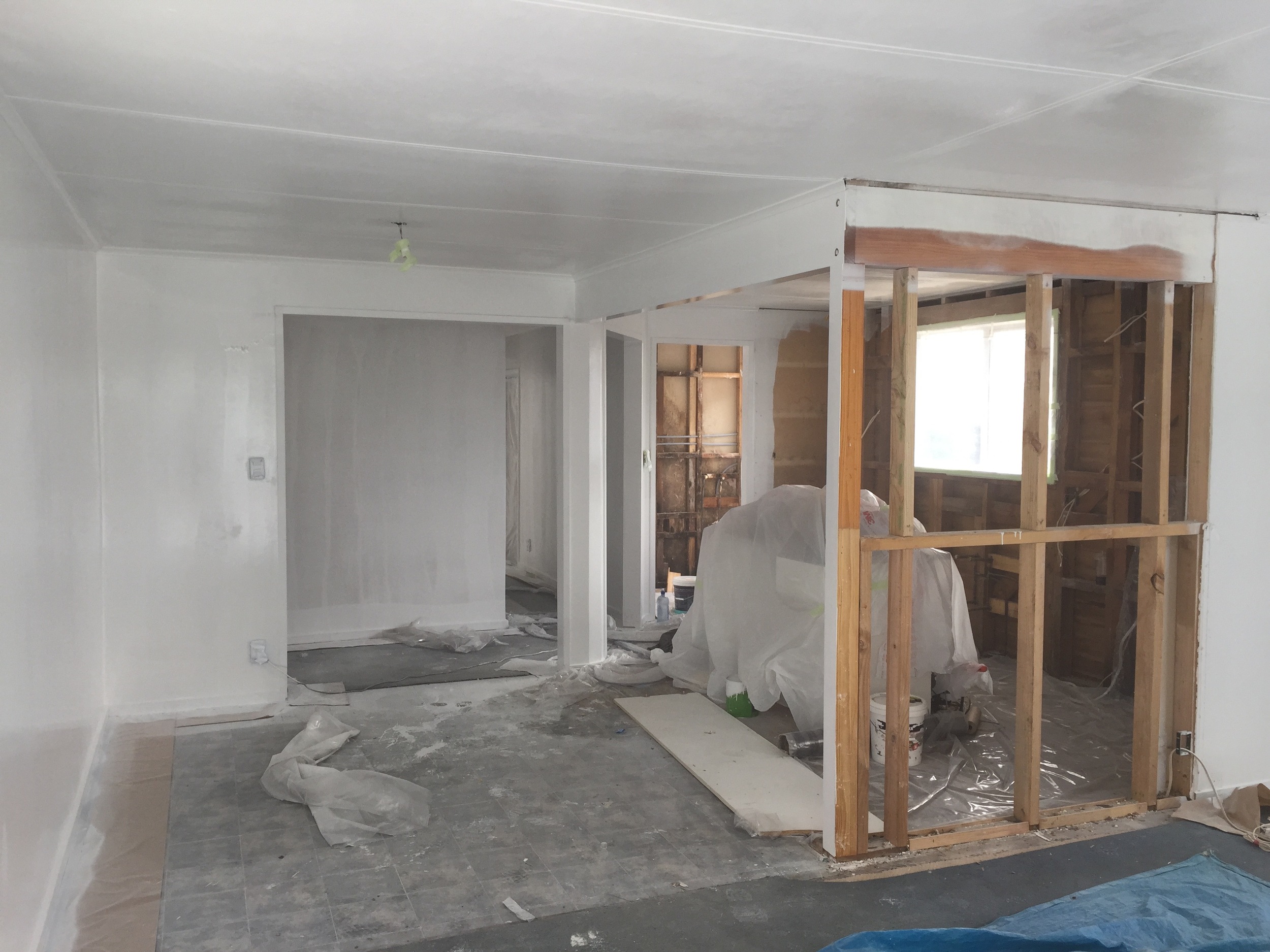Making it happen - Programme & Progress
As we shared in our first blog, this project was well planned before we had even received the keys, but as we have learnt, what you plan and what you actually achieve can be two very completely different things. As I often find with Alice, I may create a budget, but that doesn't mean she will stick to it! Therefore your planning is only as good as your programming and outworking of that plan. With renovations, you need to allow for the unexpected and extra tasks, adjusting the plan to accommodate these changes, not allow them to derail your preparations. Within this blog, I want to share how we have taken our plan and seen it progress on time and within budget through effective programming.
As a bit of background, for my job as a project manager I deliver regular reporting to clients – to give them a current snapshot on the health of their projects, changes since previous reporting, key risks and opportunities and what is being done to manage or take advantage of these. A key concern of any client is how progress is tracking against their programme, as time is one of the key three drivers on how the success of a project is generally measured. For larger projects I use a programming tool which can be purchased called Microsoft Project. For this project I adopted a plainer approach to programming for 3 reasons:
1. The programme was only for our personal planning, we weren’t showing it to tradespeople.
2. Due to being at work, Alice was going to do more of the project management herself - being at the house, arranging quotes and tradespeople. I wanted to make it simple for Alice to follow and provide input into.
3. The project is short and generally simple, there aren’t too many trades we are going to lose track of who is where.
Below is the excel spreadsheet of our programme - it doesn’t come much simpler than this. I created this as a draft initially, allowing us to advise contractors when we needed their part completed by and as they confirmed we would move them from the TBC to the Confirmed column. We have a column for our actions so we know what we need to focus on or have completed before a certain tradeperson arrives and a column of material we needed to provide.
Key thoughts when preparing a programme:
- Understand the order in which tradespeople are required.
- Use realistic time periods on how long activities will take.
- Understand your site restrictions.
- Understand the work required from yourself and that reliant on tradespeople.
- Don’t be afraid to create some float within your programme – this is a time contingency. Allow for some surprises – for example bad weather if you’re working outside.
Key thoughts to follow a programme:
- Update your programme regularly. Allowing you to see progress as it occurs, where you're ahead or behind and what you can do to improve it.
- Follow up. When relying on tradespeople make sure they commit to their dates and follow through. Don't rely on an email sent 2 weeks ago, give them phone calls and reminder emails to make sure they turn up when they have committed to.
- Be adaptable. When unexpected items arise, be prepared to make adjustments on the go. If you get stressed, take a deep breath and allow yourself to think holistically on what your options are and how you can move forward in the best way possible.
- Communicate. Make sure you communicate openly and often. Time is money - not just for you but for the tradepeople you employ and their businesses. If you're not ready for them be honest and discuss a plan to get the work done. At the start of each day, explain what you need to get done and the reason for this, get them to buy into what your trying to achieve. At the end of a day, get updates to see that progress is on track.
With planning and programming done well, our renovation has seen massive transformation a short amount of time. Here is a snapshot of our progress within a 14 day period, as you can see - a lot can happen when you have a considered and achievable plan.






